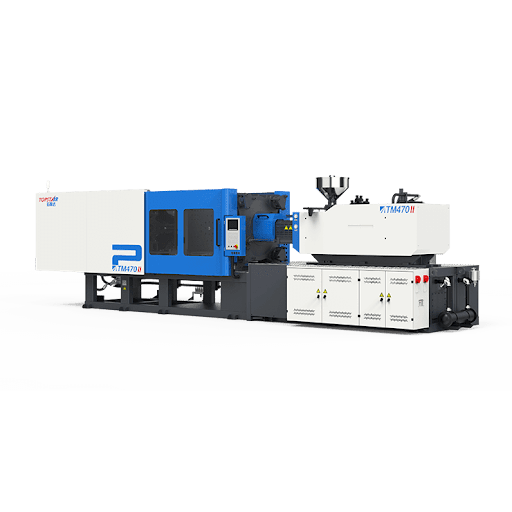injection molding machine cope with packaging injection molding?
How can an injection molding machine cope with thin-wall packaging injection molding?
The global market for thin-wall plastic packaging exceeds 15 million tons, driven by consumer demand for lightweight, cost-effective containers. As brands push wall thicknesses below 0.8 mm, a question arises: How can injection molding machines cope with thin-wall packaging injection molding? Achieving such fine geometries requires specialized hardware, precise process control, and integrated thermal management. High-speed injection profiles, optimized barrel and screw designs, advanced mold temperature controllers, robust clamping systems, real-time process monitoring, material conditioning, and collaborative mold design in the injection molding machine—strategies that enable your injection molding machine to produce ultra-thin, defect-free packaging at high throughput. With extensive field experience and industry data, we will show how to turn thin-wall challenges into profitable production capabilities.
Injection molding machine high-speed injection profiles for thin-wall filling
One of the top requirements for thin-wall packaging is to achieve fast cavity filling before the polymer cools and solidifies. The injection molding machine uses servo-hydraulic or all-electric drives, with injection speeds exceeding 600 mm/s and shot repeatability better than ±0.5%. By programming a multi-step injection profile (initial high-speed ramp to overcome flow resistance, followed by a controlled switch to hold pressure), the machine ensures uniform melt front advancement in the 0.5 mm wall thickness area. The integrated high-response drive can reduce filling time by up to 40%, minimizing hysteresis marks and weld lines. Additionally, fine-tuning the injection acceleration and deceleration profiles prevents overpressure peaks from causing thin-wall flash, thereby safeguarding the dimensional accuracy and surface finish of the plastic injection molding machine’s output.
Injection molding machine barrel and screw design optimization
To provide stable melt quality under high shear conditions, the injection molding machine’s barrel and screw must be customized for thin-wall applications. We recommend a barrier or hybrid reinforced screw profile with a compression ratio of 2.5:1 to 3:1 to promote fast melting and limit temperature overshoot. Select a barrel heating zone with tight PID control (±1 °C) to maintain melt uniformity. In addition, when processing hygroscopic resins, consider using a venting screw or a grooved feed section to ensure that moisture is vented before injection. By working with your machine OEM to specify hardened, nitrided screw flights and wear-resistant barrel bushings, you can extend the life of your injection molding machine in high-speed, high-shear operations, ensuring it remains reliably operational even as wall thicknesses decrease to less than 0.6 mm.
Mold Temperature Controllers and Thermal Management
Uniform mold temperature is crucial for thin-wall packaging, where even slight temperature gradients can cause warping or short shots. Integrate advanced mold temperature controller, multi-zone heating/cooling, and real-time PID tuning to achieve precise control within ±0.2°C of the setpoint. Place thermocouples in hot spots and program a staggered ramp: preheat zones to 80°C, stabilize at 90°C for filling, and then quickly ramp down to 30°C for ejection. This dynamic temperature profile ensures uniform polymer cure across the thin-wall section. Additionally, use high-flow water manifolds or EDM-machined conformal cooling channels to maximize heat dissipation, reduce cycle times by up to 20%, and minimize internal stresses that lead to scrap.
Clamping system and structural rigidity
Thin-wall molds require precise mold alignment and constant clamping force to prevent flash and mold damage. High-rigidity injection molding machines employ dual-platen or tie-bar-less designs, with platen flatness of 0.01 mm, and clamping forces of up to 5,000 kN. These sturdy structures resist deformation under high-speed injection, ensuring that the two halves of the mold cavity remain parallel to each other. Additionally, precision servo-controlled clamping plates enable synchronized closing and holding, thereby minimizing dynamic force peaks. On the other hand, for multi-cavity thin-wall molds, uniform force distribution prevents cavity imbalance and ensures consistent part quality. By selecting machines with advanced clamping monitoring and real-time clamping force feedback, manufacturers can maintain optimal mold protection and achieve stable thin-wall production.
Real-time process monitoring and adaptive control
To keep scrap rates low in thin-wall production, injection molding machine use real-time process monitoring and adaptive control systems. Online sensors such as cavity pressure sensors, melt temperature probes, and injection pressure monitors transmit data to the machine controller at millisecond intervals. In addition, the implementation of adaptive process control dynamically adjusts injection speed, holding pressure, and screw back pressure based on real-time feedback to compensate for material or environmental changes. Additionally, trending historical data reveals subtle deviations that occur before rejects. Plants deploying these systems report a 25% reduction in thin-wall packaging scrap rates, while integrated SPC dashboards and automated alarm thresholds ensure timely operator intervention to maintain optimal performance across a wide range of thin-wall packaging operations.
Material Conditioning and Drying Solutions
Thin-wall packaging typically uses high-flow, high-clarity resins such as PET, PP copolymers, or specialty styrenes, which are sensitive to moisture and thermal degradation. Commercial storage with centralized drying systems, featuring dew points below -40°C, ensures resin moisture levels remain below 50 ppm. Gravimetric feeders maintain additive metering within ±1%. Additionally, thermal stability testing guides barrel set points to prevent polymer breakdown at high shear rates. By implementing a strict “dry hopper, cold barrel” regimen and continuously monitoring moisture, molders can avoid the loose material, voids, and gel inclusions that lead to thin-wall scrap, resulting in crystal-clear, structurally sound packaging components.
Transforming Thin-Wall Packaging
Meeting the challenges of thin-wall packaging requires a holistic approach: high-speed injection control, optimized barrel and screw design, precision mold temperature controllers, robust clamping systems, real-time process monitoring, and meticulous material conditioning. By applying this strategy to your injection molding machine, you can reduce scrap rates by 20% or more, shorten cycle times, and deliver ultra-thin, defect-free parts that meet the most stringent industry standards.
ALSO READ: What Is a BizOp? Easy Guide to Business Opportunities in 2025







